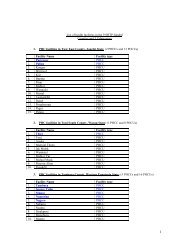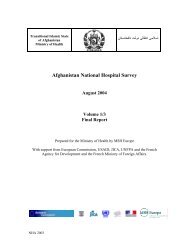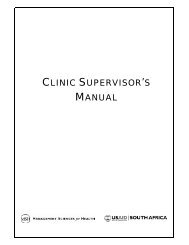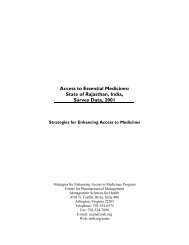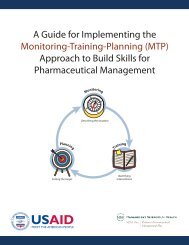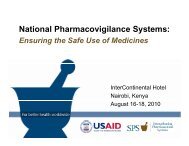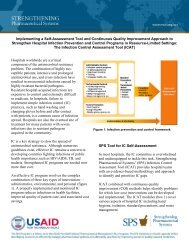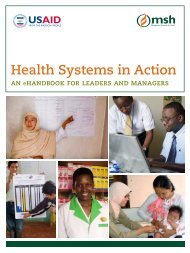Evaluation of Malawi's Emergency Human Resources Programme
Evaluation of Malawi's Emergency Human Resources Programme
Evaluation of Malawi's Emergency Human Resources Programme
You also want an ePaper? Increase the reach of your titles
YUMPU automatically turns print PDFs into web optimized ePapers that Google loves.
Management Sciences for Health<br />
Figure 19. Enrolments at Training Institutions <strong>of</strong> Nurses (and Midwives), 2004- 2008<br />
(CHAM, MCHS, KCN)<br />
B. Qualitative Findings<br />
1400<br />
1200<br />
1000<br />
800<br />
600<br />
400<br />
200<br />
0<br />
Nurse (+ Midwives)<br />
2004 2005 2006 2007 2008<br />
Focus groups were held with faculty and administrators at health training institutions as<br />
well as with students in their final year <strong>of</strong> training. The purpose <strong>of</strong> these focus group<br />
discussions was to examine to what extent new or innovative <strong>Programme</strong>s have increased<br />
the intake and output <strong>of</strong> students and to determine student views on career plans,<br />
commitments to a career in the Malawi health services and how the EHRP may have<br />
influenced them.<br />
From faculty and administrators<br />
� Respondents reported that they were able to increase the enrolment <strong>of</strong> students by<br />
<strong>of</strong>fering innovative <strong>Programme</strong>s, including use <strong>of</strong> <strong>of</strong>f-campus accommodation,<br />
use <strong>of</strong> part time tutors, cluster training and converting unused space, rather than<br />
by infrastructure improvements, which took time to implement and are still not<br />
completed.<br />
� Access to training opportunities through government subsidised fees significantly<br />
increased enrolments, which will directly contribute to increased numbers <strong>of</strong><br />
newly employed health pr<strong>of</strong>essionals entering service and bonded for a period <strong>of</strong><br />
five years.<br />
� Respondents reported the following obstacles in expanding training: lack <strong>of</strong><br />
adequate teaching space, accommodation, and shortage <strong>of</strong> tutors, which were not<br />
adequately addressed in the EHRP.<br />
� Delayed and low disbursement <strong>of</strong> funding for infrastructure development from<br />
MOH and its partners resulted in increased operational costs for the health<br />
EHRP <strong>Evaluation</strong> Final Report Page 37



